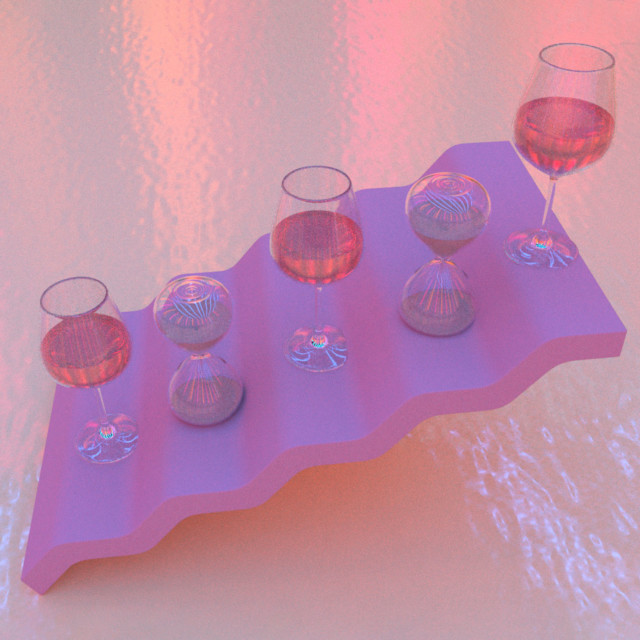The trumpets of changing seasons have sounded. The weather is telling us that summer is here. The beach is calling. Plants everywhere are green again. Shorts have come out of hibernation along with sundresses, crop tops, sunscreen, hard seltzer, gin, and, of course, rosé.
Many think of pink wine as a signifier of spring, to be drunk immediately upon release the year after the vintage. A joy of the season to pair with ramps, fava beans, stinging nettles, and fiddlehead ferns, rosé can conjure pure spring and summer joy. These newly released wines, “can be beguiling; they are explosive, often intensely fruity, and totally unique,” says Kelby James Russel, winemaker at Red Newt Cellars in the Finger Lakes of New York.
It’s rare to find a topic in the wine world that is easily painted with one broad brush. Why, then, does rosé languish under the public impression that it must be opened as soon as temperatures rise above 60 degrees? A connection between the color pink and frivolity may be partly to blame. Regardless, spend some time with the purposeful, serious rosés of the world and one quickly realizes that this, like most preconceptions, crumbles quickly. It reveals rosés of depth, intention, and age-worthiness. Here’s why cellaring rosé gives us another way to enjoy something we already know is delectable.
The Rosé Stampede
Anyone in the business of purchasing wine knows that in February, sales representatives for distributors begin the annual rosé pre-sale. Email offers that once upon a time came with opportunities to taste tank samples pre-arrival now grace inboxes with only order deadlines. The rosé train runs so fast these days that wine buyers are given a few weeks to make their decisions and place orders for spring delivery. Once the cases of radiant pink juice arrive at restaurants and retail shops, scores of customers can be found doing their best baby bird impressions — mouths agape and eager to consume a bottle as fast as possible, only to forget rosé exists six months later. Perhaps the public view of rosé has lost sight of the complexity that these wines can offer.
“It all depends on how a rosé starts its life, in particular if it was grown, picked and vinified specifically for this style of wine,” says Ed Lazzerini, owner and winegrower of Vox Vineti in Andrew’s Bridge, Pa. Rosé has often been an afterthought in vineyards, when grapes don’t ripen properly for red wine production. Other times, it’s been a byproduct. By bleeding some excess juice during red winemaking and bottling it as rosé, a winemaker can achieve a deeper, darker, more concentrated red wine. In these cases, Russel says, “You’re left with a wine that is hollow and insipid, and a belief that rosés fall apart by the following autumn.”
What Pink Should I Drink (and When Should I Drink It)?
In actuality, rosé isn’t necessarily a seasonal beverage. However, most consider the thought of rosé in February to be anathema to a pleasant drinking experience. Enter aged rosé. There are a handful of rosés that have broken through the “drink it now” barrier, like that of Lopez de Heredia in Rioja, Spain and Domaine Tempier in Bandol, France. It’s important that we not stop there. There are beautiful pink wines from all over the world that “can undergo the same types of nuanced changes via bottle aging as any other wine style,” says Lazzerini.
Think lamb shank was the exclusive territory of red wine? Try Château de Pibarnon Bandol rosé with a few years on it. This wine is 65 percent Mourvèdre and 35 percent Cinsault, coming from the neighborhood of the aforementioned Domaine Tempier. Bedrock Wine Company makes a wine from Contra Costa County, Calif., from mostly Mataro (a synonym for Mourvèdre). The brand’s “Ode to Lulu” rosé was directly inspired by the late Lulu Peyraud of Domaine Tempier. Always wait at least a year to open one of these beauties. Such patience will pay dividends through richer, deeper fruit flavors, textural interest, and intriguing minerality.
Is pork on the menu this evening? Consider pulling a bottle of Villa Calicantus “Chiar’otto” that has spent some time in the cellar. The classic grapes of the region — Corvina, Rondinella, and Molinara — are rounded out here with a little Sangiovese. The wine is aged in used oak barrels before being released, softening its hard edges. Another beautiful pink wine that sees some time in barrel and should absolutely not be plucked from the cellar too soon is Antica Terra’s “Angelicall” rosé of Pinot Noir. This one can display bright, ripe red fruit tones with complex spices after a few years in bottle.
Spending Time in the Cellar
All these examples are proof positive that rosé, made thoughtfully, can and should age. Lazzerini’s own rosé has “that higher acidity and lower pH that enables our Discantus to have a long, vibrant life,” he says. And Russel uses techniques such as “72 hours on skins prior to pressing, a cool ferment, [and] even time on the full lees before bottling” to ensure that his Kelby James Russel rosé can be cellared for years if given the chance.
Feeling froggy in the springtime and guzzling brand-new rosé by the liter isn’t a crime, but don’t forget to save a few bottles, too. And next year, in the height of winter, with snow on the ground and a chill in the air, revisit a pink wine that evokes images of summer with its cranberry and watermelon exuberance, but acknowledges the passage of time with resolved, precise acidity and thoughtful notes of spice and earth.
